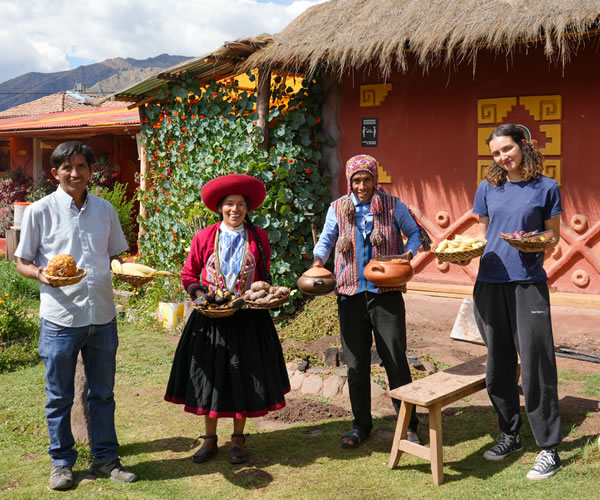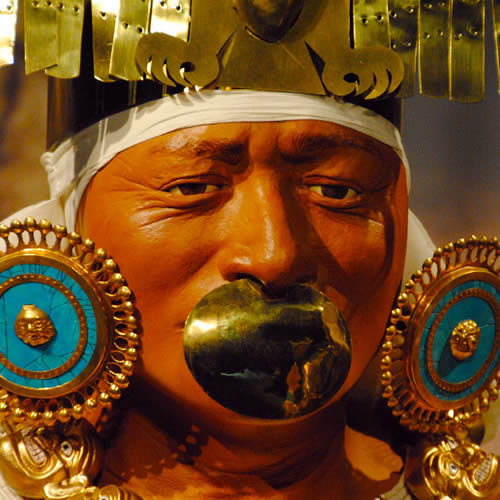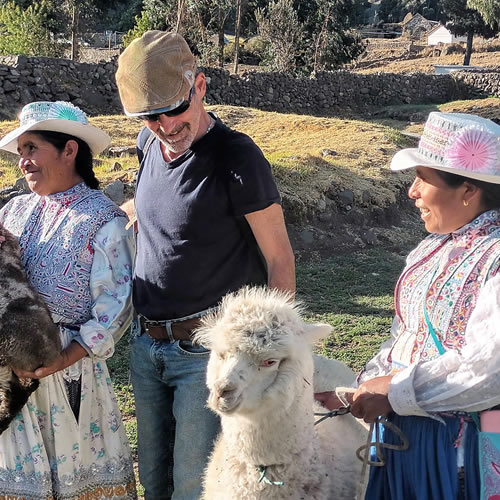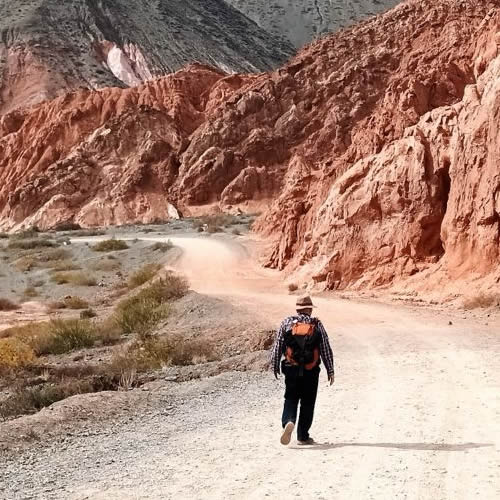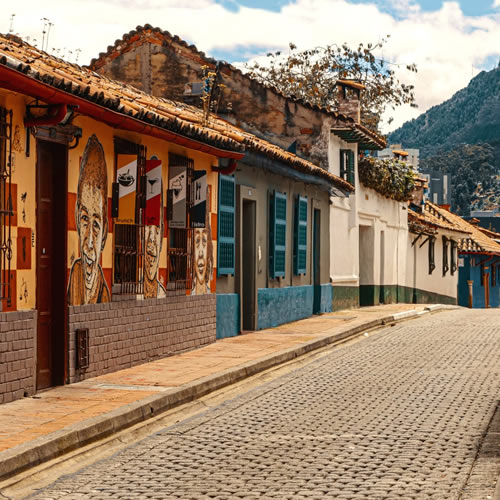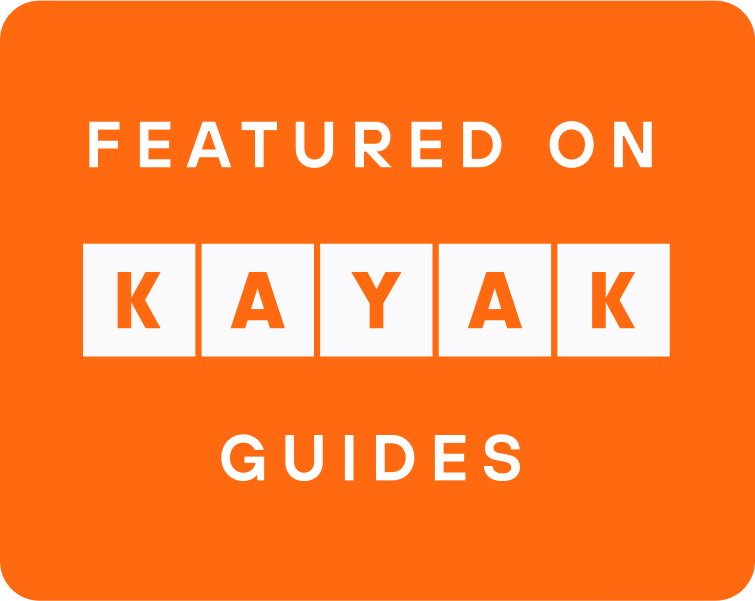
Northern Peru Unusual Trip

The north is still an unknown land, it is a territory that, for centuries, has secretly preserved pre-Columbian monuments of high archaeological and historical level. Some are contemporary to the Incas, but most were the origin of the great pre-Columbian civilizations. And nature is not far behind. There are treasures of natural and even wild beauty. A trip to begin to savor the vast richness of Peru or to complement the classic trip of the South.
ITINERARY
Duration: 15 days
Arrival at Jorge Chavez airport in Lima. Welcome by an Intercultural Tours assistant. Private transfer to the hotel and installation.
Early departure to the airport to take the flight to the city of Jaén. We will land in a region called high jungle, at an altitude of only 700 meters. This region enjoys a warm climate during most of the year. After a transfer in a private vehicle we will arrive at the picturesque town of Cuispes. On the way, we will see waterfalls and farmland that show that we are already far from the big cities and in more intimate contact with nature. It is a region that produces rice, coffee, cocoa and tropical fruits.
After meeting our local guests we will do the respective installation. After lunch prepared with local products, our hosts will take us to perform some daily activities related to agricultural work and especially the production of coffee. It is the moment to know all the secrets of this bean appreciated by the whole world. Dinner and overnight at a local family’s house.
One hour transfer to the village of Cocachimba. This is the starting point for the hike to the Gocta waterfall. The trek can be done on foot or on horseback (horse rental is optional and can be paid on the same day). Here the ecosystem is unique and shows the exuberance of the sub tropical Amazon. The reward of the hike is the arrival at the foot of this waterfall of more than 771 meters. The landscape is a mixture of rain produced by the splashing of the waterfalls and the perfumes emanating from the clay soil. We return to Cocachimba for lunch and then take a private vehicle to travel to the beautiful city of Chachapoyas, whose name means “mountain of mist”, this because of its location in the cloud forest. It is a city, quite isolated from the rest of the country and therefore has a particular charm. We will take the time to visit its picturesque streets with colonial balconies, the market and the main square, where the villagers gather for their daily chats and meetings.
We will start with a one hour ride to the town of Tingo. Here we will take a cable car service, to travel for 20 minutes through the greenery to a point near the archaeological site of Kuelap. This small fortified city was built on a 3000 m high mountain.
Access is through one of the few walled gates that allowed the Chachapoyas to control their enclosure from enemies. Arriving at the top, where there is a wide platform, we can observe a large number of houses and circular constructions decorated with geometric and zoomorphic elements. The place invites us to imagine the different activities that were carried out in the area, most of them of a magical-religious nature.
Then, our transportation takes us through a curvilinear road to the village of Revash. From this point we can access the tombs that bear the same name. These burials are attached to the cliffs of the mountain and are characterized by colorful decorations, where the reds and ochers stand out.
After these two beautiful visits we return to the wagon that takes us to the town of Leymebamba, where we will spend another night in the house of the inhabitants. This is another occasion to share with our local hosts who tell us about the development of their region thanks to tourism and agriculture.
Full day to enjoy this village and its inhabitants. We start the day with a cozy breakfast with our guests. Then, we head to the local museum that presents the history and archaeological remains of the entire region. The mummy room is impressive for the quantity and variety of mummies.
Lunch is served again in the company of the local population. Then we will participate in some daily activities. We will start with weaving, as the women of the area make traditional handlooms. Then we will witness the woodwork that was done to carve offerings to the most important gods of the Chachapoyas culture. Possibility to buy some souvenirs. According to the season it is also possible to experience the preparation of Andean cheese. Dinner and second night in the house of an inhabitant of the region.
After breakfast, we will take the road between Leymebamba and Cajamarca. It is a winding road that allows us to observe a series of valleys and ravines that require a journey of about 6 hours. Upon arrival in Cajamarca, we will take the time to visit the city. We will start with the religious museum of Belem and the so-called “rescue room” of the Inca Atahualpa. It is here that the colonization of the Inca empire by the Spaniards was consolidated. Atahualpa, believing in the words of his captor Pizarro, offered to fill one room with gold and two others with silver objects. This without knowing that this “ransom” of liberation was not enough to finally execute him in spite of having fulfilled his offer. We finished the visit by walking through the traditional streets and enjoying the large main square.
In the morning, we will visit the forest of stones called Cumbemayo. The place shows lithic formations of unique shapes and above all an amazing system of hydraulic channels carved on the rocks of the mountains. It is a beautiful hike that allows us to meet again with spaces away from the noise and agglomeration.
On the way back, we will have a traditional lunch at the so-called “windows of Otuzco”, which are actually pre-Columbian burial centers. There are 337 square niches carved into the natural rock.
After the visit, we head towards the Peruvian coast to reach the city of Chiclayo.
It is a day of very important archaeological discoveries. At 1 hour by private vehicle from Chiclayo, is the archaeological site of Tucume. A place built by the Lambayeque civilization. In the place we find 26 huacas (ritual centers) that were made of mud and adobe. The most impressive ones are up to 40 meters high. Archaeologists assure that the oldest buildings date back to 700 A.D. From this historical moment on, the city grew exponentially until it became an administrative center of major importance.
After tasting the delicious northern regional food, we will visit one of the most beautiful museums in Peru: Royal Tombs of Sipan. The place is dedicated almost entirely to the greatest archaeological discovery of the century. It is a series of tombs that kept ritual and decorative elements gilded with gold, silver, seashells and precious stones. Inside, the eyes get lost in so much artistic beauty and the rooms follow one after the other until you reach the heart of the building, where the main tomb is displayed. After the visit, return to the hotel and overnight in Chiclayo.
We will drive about 30 km to Huaca Rajada, the eroded pyramid that contained the burial site of the Lord of Sipan and the other dignitaries seen in the museum the day before.
Then, we take the Panamerican Highway to reach the Pyramid of El Brujo. In this place, it was discovered called “the Lady of Cao”, who was a Mochica ruler leader buried around 450 AD. As in all the burials of this civilization, objects of incomparable artistic value made of gold were found. This archaeological discovery demonstrates the great importance that some women had in the formation of pre-Columbian society. The highlight of the mummy is a tattoo that has been preserved until the moment of discovery. Then we travel about 45 km to reach the city of Trujillo, an urban center that maintains the colonial richness with large windows and balconies of Andalusian Moorish style.
We begin with a visit to the Huaca de la Luna, which was a very important ritual center for the Mochica civilization. Its walls beautifully decorated with colorful frescoes show the great talent of these people to represent their gods and daily rituals of the time. The representations of the god Ai-Apaec, the god of the Mountain or beheader god, stand out. Then we move to Huanchaco, in front of the coast and where we will enjoy a traditional lunch in front of the Pacific beaches. The fishermen still make the so-called Caballito de Totora, which is an ancestral boat that allows surfing on the waves and perform the tasks of fishing.
Then, we will visit the largest adobe city in the world: the magnificent Chanchán, which was the capital of the Chimú culture in the 14th century. This immense mud city occupies an area of more than 20 km2. One of the reasons why it was declared a World Heritage Site by UNESCO in 1986. It is estimated that more than 30,000 inhabitants lived there, making it one of the most populated cities of the time. In the tour you will see huge squares, decorated palaces, patios, alleys and water reservoirs.
In the evening and after dinner we will board a night bus to Huaraz in the middle of the Andes Mountains.
After settling in at the hotel, we will take a private vehicle to discover the so-called Callejón de Huaylas. It is a fertile valley of more than 200 km long. The region is surrounded by high mountains that have turned it into a true paradise for climbing. We find 86 snow-capped peaks that exceed 5000 m. which allows us to enjoy a unique and spectacular landscape of glaciers and mountains. In the tour you can also see the Andean settlers who still maintain traditions and ancestral way of working. After an ascent to 3,850 meters above sea level we can enjoy a magical encounter with the beautiful lagoons of Llanganuco. The color of the waters is turquoise. On the edges the queunas (endemic tree of the Peruvian highlands) adorn the surreal environment. On the way back, a brief stop in Yungay to remember the town buried by a deadly avalanche of mud and stones in 1970. This was caused by an earthquake of 7.8 degrees and left only 400 survivors of the 22,000 inhabitants that inhabited the place.
We head to the archaeological site of Chavin de Huantar. It is considered one of the most important vestiges of the Andean civilization. The site was declared Cultural Patrimony of Humanity by UNESCO in 1985. When visiting the monument, it is observed that the complex was built as a truncated pyramid. It is thought that this temple was a great oracle, where the leaders and priests connected with their divinities through the consumption of hallucinogenic drinks, chicha and coca leaves. The trance led them to the impressive subway galleries inside the pyramid, which house finely carved monoliths with anthropomorphic representations of the gods. The most impressive is the so-called Lanzón de Chavin, which is a kind of stone spire more than 4 m high. The Peruvian government has built a large museum located near the monument, which allows a better understanding of the achievements of this civilization that gave rise to great technological developments in the Andes. Return to Huaraz for the night.
At the indicated time we will transfer to the bus station to take a comfortable bus to the city of Lima.
Visit the city of Lima, declared a World Heritage Site by UNESCO for its rich republican and colonial architecture. During the tour we will visit the modern neighborhood of Miraflores, where we can observe the Pacific Ocean and the historic center where most of the historical monuments and two beautiful squares are agglomerated. On one side the Plaza de Armas and on the other side the Plaza San Martin. Then we will stop at the convent of San Francisco, where we can visit the colonial catacombs and appreciate the religious art that has bequeathed this city.
In the afternoon, at the indicated time, we will transfer to the airport for the international flight.
What does it include?
- Small groups that guarantee a real interaction with the local population.
- Transfers and/or assistance upon arrival and international departures.
- Transportation for the entire circuit (Line transportation, trains, private vehicles or flights according to the circuit).
- Guide in the requested language and trained in intercultural issues.
- Meeting with several Andean families willing to share their knowledge and traditions.
- Entrance fees to the attractions included in the circuit.
- Meals in the houses of the inhabitants and according to demand (half board or full board)
- Internal flights according to the itinerary
- Permanent assistance before, during and after the trip.
What is not included?
- International flights
- Entrance fees to archaeological sites or museums not included in the circuit.
- Travel insurance
- Tips
Recommendations for the visitor
Spending the night with minimal comfort elements can be a small adventure, however the human warmth of the local people easily complements the lack of comfort to which we are accustomed in urban areas.
Our experiences are respectful of the local population, their customs and traditions, therefore we recommend following the instructions of your guide in order not to break the intercultural harmony that we preserve.
The best way to avoid the consumption and production of plastics is to avoid using them. Therefore we recommend having a canteen or a bottle that can be reused. We provide water to fill your bottles

